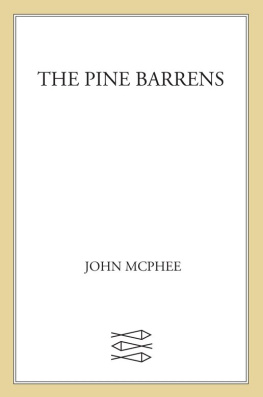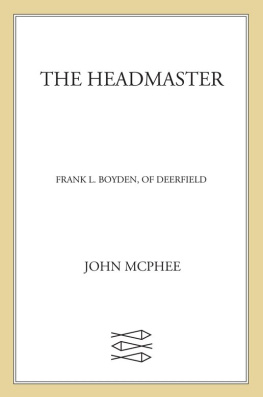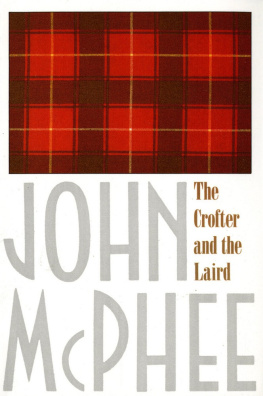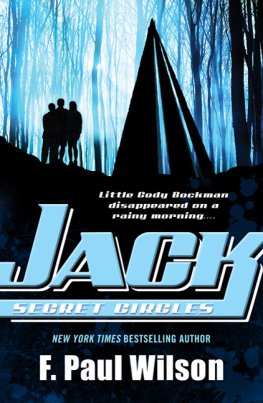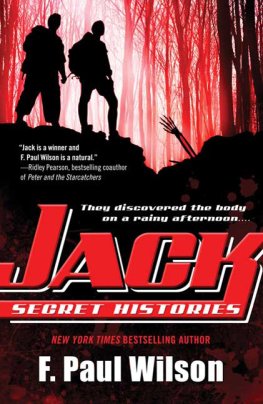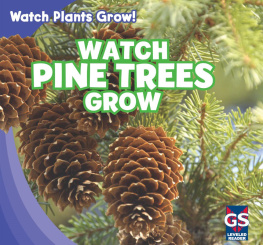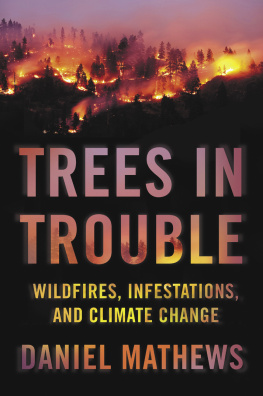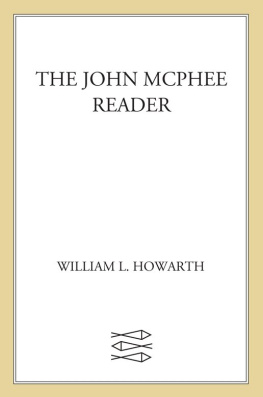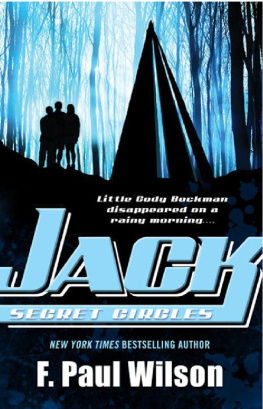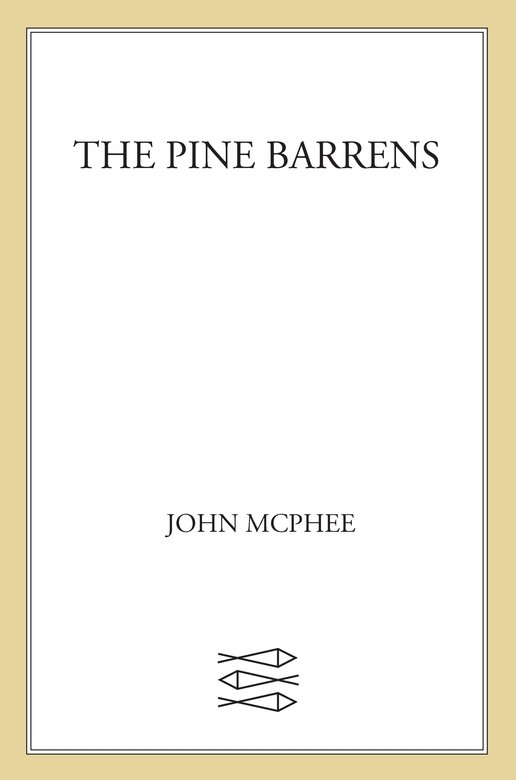The Woods from Hog Wallow
F ROM THE FIRE TOWER ON BEAR SWAMP Hill, in Washington Township, Burlington County, New Jersey, the view usually extends about twelve miles. To the north, forest land reaches to the horizon. The trees are mainly oaks and pines, and the pines predominate. Occasionally, there are long, dark, serrated stands of Atlantic white cedars, so tall and so closely set that they seem to be spread against the sky on the ridges of hills, when in fact they grow along streams that flow through the forest. To the east, the view is similar, and few people who are not native to the region can discern essential differences from the high cabin of the fire tower, even though one difference is that huge areas out in this direction are covered with dwarf forests, where a man can stand among the trees and see for miles over their uppermost branches. To the south, the view is twice broken slightlyby a lake and by a cranberry bogbut otherwise it, too, goes to the horizon in forest. To the west, pines, oaks, and cedars continue all the way, and the western horizon includes the summit of another hillApplePie Hilland the outline of another fire tower, from which the view three hundred and sixty degrees around is virtually the same as the view from Bear Swamp Hill, where, in a moments sweeping glance, a person can see hundreds of square miles of wilderness. The picture of New Jersey that most people hold in their minds is so different from this one that, considered beside it, the Pine Barrens, as they are called, become as incongruous as they are beautiful. West and north of the Pine Barrens is New Jerseys central transportation corridor, where traffic of freight and people is more concentrated than it is anywhere else in the world. The corridor is one great compression of industrial shapes, industrial sounds, industrial air, and thousands and thousands of houses webbing over the spaces between the factories. Railroads and magnificent highways traverse this crowded scene, and by 1985 New Jersey hopes to have added so many additional high-speed roads that the present New Jersey Turnpike will be quite closely neighbored by the equivalent of at least six other turnpikes, all going in the same direction. In and around the New Jersey corridor, towns indistinguishably abut one another. Of the great unbroken city that will one day reach at least from Boston to Richmond, this section is already built. New Jersey has nearly a thousand people per square milethe greatest population density of any state in the Union. In parts of northern New Jersey, there are as many as forty thousand people per square mile. In the central area of the Pine Barrensthe forest land that is still so undeveloped that it can be called wildernessthere are only fifteen people per squaremile. This area, which includes about six hundred and fifty thousand acres, is nearly as large as Yosemite National Park. It is almost identical in size with Grand Canyon National Park, and it is much larger than Sequoia National Park, Great Smoky Mountains National Park, or, for that matter, most of the national parks in the United States. The people who live in the Pine Barrens are concentrated mainly in small forest towns, so the regions uninhabited sections are quite largetwenty thousand acres here, thirty thousand acres thereand in one section of well over a hundred thousand acres there are only twenty-one people. The Pine Barrens are so close to New York that on a very clear night a bright light in the pines would be visible from the Empire State Building. A line ruled on a map from Boston to Richmond goes straight through the middle of the Pine Barrens. The halfway point between Boston and Richmondthe geographical epicenter of the developing megalopolisis in the northern part of the woods, about twenty miles from Bear Swamp Hill.
Technically, the Pine Barrens are much larger than the thousand or so square miles of them that remain wild, and their original outline is formed by the boundaries of a thick layer of sand soils that covers much of central and southern New Jerseydown the coast from the outskirts of Asbury Park to the Cape May Peninsula, and inland more than halfway across the state. Settlers in the seventeenth and eighteenth centuries found these soils unpromising for farms, left the land uncleared, and began to refer to the region as the Pine Barrens. People in NewJersey still use the term, with variants such as the pine belt, the pinelands, and, most frequently, the pines. Gradually, development of one kind or another has moved in over the edges of the forest, reducing the circumference of the wild land and creating a man-made boundary in place of the natural one. This transition line is often so abrupt that in many places on the periphery of the pines it is possible to be at one moment in farmland, or even in a residential development or an industrial zone, and in the next moment to be in the silence of a bewildering green country, where a journey of forty or fifty miles is necessary to get to the farms and factories on the other side. I dont know where the exact center of the pines may be, but in recent years I have spent considerable time there and have made outlines of the integral woodland on topographic maps and road maps, and from them I would judge that the heart of the pine country is in or near a place called Hog Wallow. There are twenty-five people in Hog Wallow. Some of them describe it, without any apparent intention to be clever, as a suburb of Jenkins, a town three miles away, which has forty-five people. One resident of Hog Wallow is Frederick Chambers Brown. I met him one summer morning when I stopped at his house to ask for water.
Fred Browns house is on an unpaved road that curves along the edge of a wide cranberry bog. What attracted me to it was the pump that stands in his yard. It was something of a wonder that I noticed the pump, because there were, among other things, eight automobiles in theyard, two of them on their sides and one of them upside down, all ten years old or older. Around the cars were old refrigerators, vacuum cleaners, partly dismantled radios, cathode-ray tubes, a short wooden ski, a large wooden mallet, dozens of cranberry pickers boxes, many tires, an orange crate dated 1946, a cord or so of firewood, mandolins, engine heads, and maybe a thousand other things. The house itself, two stories high, was covered with tarpaper that was peeling away in some places, revealing its original shingles, made of Atlantic white cedar from the stream courses of the surrounding forest. I called out to ask if anyone was home, and a voice inside called back, Come in. Come in. Come on the hell in.
I walked through a vestibule that had a dirt floor, stepped up into a kitchen, and went on into another room that had several overstuffed chairs in it and a porcelain topped table, where Fred Brown was seated, eating a pork chop. He was dressed in a white sleeveless shirt, ankle-top shoes, and undershorts. He gave me a cheerful greeting and, without asking why I had come or what I wanted, picked up a pair of khaki trousers that had been tossed onto one of the overstuffed chairs and asked me to sit down. He set the trousers on another chair, and he apologized for being in the middle of his breakfast, explaining that he seldom drank much but the night before he had had a few drinks and this had caused his day to start slowly. I dont know whats the matter with me, but theres got to be something the matter with me, because drink dont agree with me anymore, he said. He had a raw onion in one hand, and while he talked heshaved slices from the onion and ate them between bites of the chop. He was a muscular and well-built man, with short, bristly white hair, and he had bright, fast-moving eyes in a wide-open face. His legs were trim and strong, with large muscles in the calves. I guessed that he was about sixty, and for a man of sixty he seemed to be in remarkably good shape. He was actually seventy-nine. My rule is: Never eat except when youre hungry, he said, and he ate another slice of the onion.

